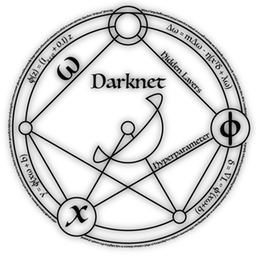#Darknet# Darknet is an open source neural network framework written in C and CUDA. It is fast, easy to install, and supports CPU and GPU computation.
For more information see the Darknet project website.
For questions or issues please use the Google Group.
#About This Fork#
-
This fork repository adds some additional niche in addition to the current darkenet from pjreddie. e.g.
(1). Read a video file, process it, and output a video with boundingboxes.
(2). Some util functions like image_to_Ipl, converting the image from darknet back to Ipl image format from OpenCV(C).
(3). Adds some python scripts to label our own data, and preprocess annotations to the required format by darknet.
...More to be added
-
This fork repository illustrates how to train a customized neural network with our own data, with our own classes.
The procedure is documented in README.md.
Or you can read this article: Start Training YOLO with Our Own Data.
#DEMOS of YOLO trained with our own data# Yield Sign: https://youtu.be/5DJVLV3P47E
Stop Sign: https://youtu.be/0CQMb3NGlMk
#How to Train With Customized Data and Class Numbers/Labels#
-
Collect Data and Annotation
(1). For Videos, we can use video summary, shot boundary detection or camera take detection, to create static images.
(2). For Images, we can use BBox-Label-Tool to label objects.
-
Create Annotation in Darknet Format
(1). If we choose to use VOC data to train, use scripts/voc_label.py to convert existing VOC annotations to darknet format.
(2). If we choose to use our own collected data, use scripts/convert.py to convert the annotations.
At this step, we should have darknet annotations(.txt) and a training list(.txt).
-
Modify Some Code
(1) In src/yolo.c, change class numbers and class names. (And also the paths to the training data and the annotations, i.e., the list we obtained from step 2. )
If we want to train new classes, in order to display correct png Label files, we also need to moidify and run [data/labels/make_labels] (https://github.com/Guanghan/darknet/blob/master/data/labels/make_labels.py)(2) In src/yolo_kernels.cu, change class numbers.
(3) Now we are able to train with new classes, but there is one more thing to deal with. In YOLO, the number of parameters of the second last layer is not arbitrary, instead it is defined by some other parameters including the number of classes, the side(number of splits of the whole image). Please read the paper
(5 x 2 + number_of_classes) x 7 x 7, as an example, assuming no other parameters are modified. Therefore, in [cfg/yolo.cfg](https://github.com/Guanghan/darknet/blob/master/cfg/yolo.cfg), change the "output" in line 218, and "classes" in line 222.(4) Now we are good to go. If we need to change the number of layers and experiment with various parameters, just mess with the cfg file. For the original yolo configuration, we have the pre-trained weights to start from. For arbitrary configuration, I'm afraid we have to generate pre-trained model ourselves.
-
Start Training
Try something like:
./darknet yolo train cfg/yolo.cfg extraction.conv.weights
#Contact# If you find any problems regarding the procedure, contact me at gnxr9@mail.missouri.edu.
Or you can join the aforesaid Google Group; there are many brilliant people asking and answering questions out there.

